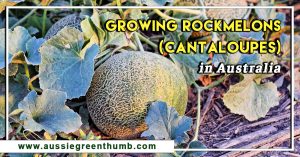I’m a huge fan of Southeast Asian food – give me a Thai curry any day, every day of the week. I’m so glad that the Kaffir lime was discovered in Sri Lanka and that it has travelled the world to become not just a valued kitchen ingredient, but a beautiful garden companion too.
In our how to grow and care guide, we’ll look at the Kaffir lime in a bit more detail in terms of its main features. There is advice on how to propagate from both seed and cuttings, all the guidance you’ll need in terms of caring for your Kaffir lime, pests and diseases info, and we end off our guide with some frequently asked questions.
More...
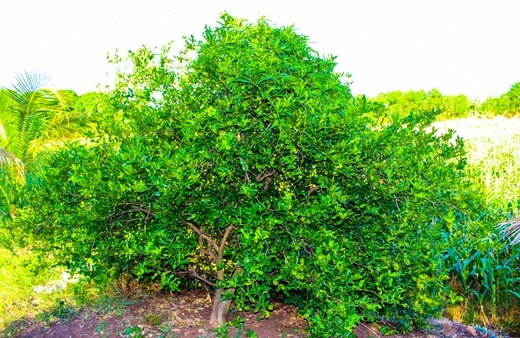
Family: | Rutaceae |
|---|---|
Genus: | Citrus |
Species: | C. hystrix |
Common Names: | Thai lime, Kaffir lime, Makrut lime |
Location: | Indoor or outdoor |
Type: | Shrub or tree |
Growth: | Up to 8 metres tall, 4 metres wide |
Sun requirements: | Full sun |
Foliage Colour: | Green |
Flower Colour: | Pink/white |
Flowering: | Most of the year |
Fruit: | Green to yellow |
Maintenance level: | Average |
Poisonous for pets: | Yes |
Introducing Kaffir lime
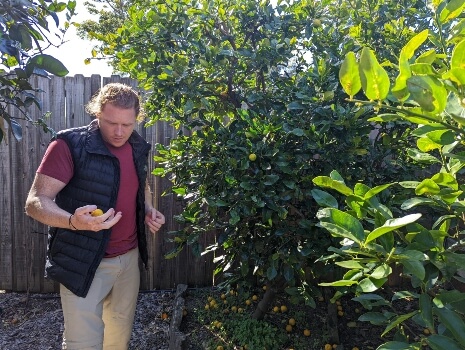
Nathan Schwartz of Aussie Green Thumb holding a Kaffir lime fruit
The Kaffir lime is also known as the Thai lime and is native to Southeastern Asia. Citrus hystrix is the botanical name. It’s quite a thorny evergreen shrub that can also be a small tree much loved for its wonderful fresh scent. It produces delightful flowers and green fruit as the name hints at.
The Kaffir lime is incredibly popular for making Thai cuisine – imagine divine soups and curries, but also fish cakes and stir fries. This shrub is in bloom for most of the year, meaning you can enjoy the pink white blooms for many months.
After the flowers comes the fruit, which starts off a bright green colour and then becomes yellow when it’s ripe and falls off the tree. If you’re imagining a juicy fruit, it isn’t unfortunately and its flavour is rather acidic.
The rind of the kaffir lime fruit is the real prize and what’s used for flavouring in cooking.
Growing Kaffir Lime in Australia

The Kaffir lime enjoys a tropical existence but can handle temperatures up to 0°C. You have the option of enjoying this shrub either indoors or outdoors. The small tree can grow up to 8 metres high and can stretch to a width of around 4 metres.
If you are growing a Kaffir lime indoors you’ll need to water it often, or can offer a light misting too. Propagation of the Kaffir lime is either using seed or by the cutting method and the shrub doesn’t struggle too much with pests and diseases.
Lighting requirements for happy growth of the Kaffir lime can be full sun or partial shade. It likes a fertile and sandy soil that is well-draining and doesn’t like to sit in water. The plant also doesn’t like strong winds so ensure it has enough protection.
You can fertilise your Kaffir lime every 2 weeks in spring and summer using an organic fertiliser. A good time to prune is when you see the new growth in springtime. This will encourage new branch growth.
How to Propagate Kaffir Lime
Makrut Lime Propagation from Cuttings
Before you prepare to take your cutting, you can get a small pot ready with sand or potting soil that is already moist. Just make sure it’s not soggy. The ideal time to take a Kaffir lime cutting would be at the end of springtime or the start of summer.
Take a cutting that is about 10 centimetres in length and it should have no flowers or fruit on it. You can remove most of the leaves – just leave 2 or 3 at the top of the cutting.
Dip the cut end of the cutting into the rooting hormone and then you can plant it in the potting mix. Make sure about half the stem is buried and then push down the soil around it.


Get Your Free Guide:
Master Growing Australian Natives eBook
A Must Have Complete Guide for Every Australian Garden
Get Your Free Guide:
Master Growing Australian Natives eBook
A Must Have Complete Guide for Every Australian Garden
Not sure which rooting hormone to use? Have a read through the best rooting hormones available online.
The important factor here is providing enough humidity for your Kaffir lime cutting. You don’t want it to dry out so you’ll need to make sure that that soil stays moist and the air around the plant.
A great way to do this is putting a plastic bag over the cutting and then put it somewhere shaded or with indirect light. We recommend checking the cutting every few days to make sure it has enough moisture and then water accordingly.
In about 6 to 8 weeks, the cutting should have enough root development to then be transplanted. To test this, you just pull gently on the plant and if it doesn’t disrupt the soil, you’re good to go.
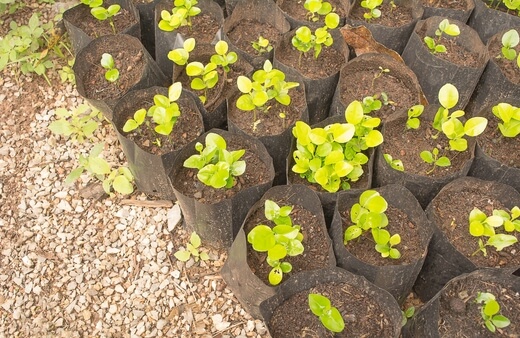
Propagating Kaffir Lime from Seeds
You might want to go the propagation route extracting seeds from an existing Kaffir lime tree. You’ll first need to remove all the fruit pulp from the seed and then leave it to air dry before you plant it.
You can plant the seed about 3.8 cm deep into potting soil – if you can buy a potting soil that is specifically for citrus trees, even better. The planted seeds need to be somewhere warm and get enough sunlight. Direct sunlight is ideal for seeds that are trying to germinate.
When it comes to water needs, the seeds that are growing actually need more water than an established plant. Aim to keep the soil always slightly moist – soggy soil is what you’re trying to avoid. When the seedling is up and running you can then start watering once a week.
How to Plant Thai Lime
Once your seedling has been established and you’re ready to transplant it, it can either go outdoors or you can opt to grow it in a pot. If you are going the outdoors route, remember the Kaffir lime wants to be in a warm and sunny spot.
It will also need enough space to grow, at least 1.8 metres. If your tree is going to live indoors, the most important thing to remember is that it will need enough light in order to thrive.
The pot should be an appropriate size so the Kaffir lime can grow. Starting off with a medium size pot is good and then as the tree grows, you can change the pot size.
Caring for Kaffir lime
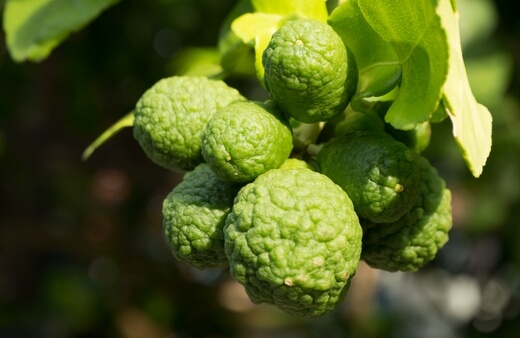
If your idea of an ideal tree or shrub is something hardy, you’re choosing well with the Kaffir lime. They don’t need a lot of maintenance and even the beginner gardener can manage with it.
The 3 magic ingredients for a happy and healthy Kaffir lime is warmth, sunlight and water.
Temperature
Like any subtropical plant, your Kaffir lime will enjoy a temperature and climate similar to its native land. You’re aiming to keep it above 15°C. This tree doesn’t like the cold or frost.
If you live somewhere where the nights are cold, perhaps growing your Kaffir lime indoors would be better. You could also move it between indoors and outdoors as the temperatures change.
Sunlight Needs
The Kaffir lime loves full sun. This means about 6 hours of direct sun each day, but even more is better. The tree can also live in partial shade but it will grow more slowly.
If you’re concerned that the afternoon sun is too much for your tree (it might start to look parched and wilted) you can aim for a planting spot with direct morning and late afternoon sun.
For Kaffir lime trees living indoors, next to a window is a good spot to meet the tree’s lighting needs.
Watering Citrus hystrix
Kaffir lime is a citrus tree after all and that means it’s thirsty. They like lots of water and this is particularly important when they are growing. Mist them often so you can maintain a good humidity for your tree.
When it comes to water, although the Kaffir lime likes plenty of it, be careful not to give the tree too much water. If the soil is soggy, your tree might end up with root rot. The best thing to do is let the soil dry out between each watering session. You can test the soil with your finger to check this.
The more established Kaffir lime only needs water once a week unless it’s very hot and dry. In winter, they need less water. In the propagation phase of seeds or cuttings, you’ll need to water a bit more often to kick start a healthy root system.
If you notice your leaves are looking wilted or starting to drop off, you might be giving too much water.
What Soil to Use
When it comes to achieving soil bliss for your Kaffir lime, you’ve probably already figured out the soil needs to be moist but well-draining. Kaffir lime can struggle with root rot so well-draining is super important.
We would recommend loam soil (learn more about loam soil here) and a mixture of sand, silt, and clay will provide the type of drainage that the Kaffir lime needs. Adding organic matter to the soil also helps with drainage. Kaffir lime will grow well in acidic soil with a recommended pH between 5 and 6.
Fertilising Citrus hystrix
Citrus trees like the Kaffir lime need a lot of nitrogen to thrive. Aim for a fertiliser that also has iron, zinc and manganese. All of these promote healthy growth and fruit in the Kaffir lime.
When your plant is just starting out, fertiliser helps to build up a strong root system. For the first year of life you can do a citrus fertiliser application each month, and then spread it out to every 6 weeks.
Spring and summer are the best time to use fertiliser as this is the height of the growth season. You don’t need any fertiliser in autumn or winter.
Pruning Kaffir Lime
The Kaffir lime really lives up to a low maintenance reputation but pruning is always recommended to encourage healthy growth of your tree. You can aim to prune every year or two.
The tree will look good but also have stronger branches and more air circulation. This generally helps to fight off disease and pests. Aim to give your tree the snip before you see the first flowers.
You can get rid of any dead or damaged tree and cut at a 45 degree angle to avoid the risk of infection or disease. Check out our detailed reviews of the best pruning shears here.
Kaffir Lime Pests and Diseases to Look Out For
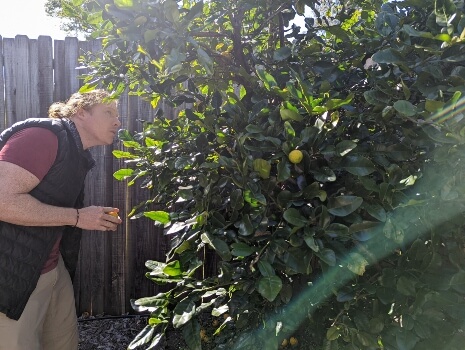
Nathan Schwartz of Aussie Green Thumb examining a Kaffir lime tree
The Kaffir lime, like the rest of the citrus trees in its family, might deal with a few diseases and a particular pest that you’ll need to look out for. Luckily the citrus smell actually works in your favour to keep pests away so you’re already one step ahead there.
What sometimes happens is if a nearby plant has mites or scales, your Kaffir lime might end up with these too. When you overwater your tree, this can also cause an infestation of unwanted pests.
Greasy spot fungus
This is a common one that affects citrus trees. You’ll notice yellow and greasy spots on your leaves as a giveaway that this is what you’re dealing with. Citrus oil or an organic fungicide is the best treatment.
Root rot
Here we have another common citrus tree challenger, especially if you’re growing your Kaffir lime in the ground. If you maintain good drainage for your tree, you limit the risk of tiny parasites getting into the root tissues and causing infection.
If a tree is dealing with root rot you’ll often notice that the tree trunk starts cracking and becomes discoloured.
Citrus cankers
Kaffir limes can end up with citrus cankers and these are very contagious and spread quickly. Fast treatment is super important. You’ll know this disease when you see yellow and round lesions forming on the leaves, branches and fruit of your Kaffir lime.
You’ll need to invest in a spray specifically designed for this disease which kills the bacteria.
Aphids
This is the pest you’re most likely to be dealing with on your Kaffir lime tree. You’ll find these bugs hanging out on the underneath of the tree leaves but also on any new tree growth. Use your garden hose to give your tree a spray and hopefully knock off a good quantity of the bugs.
If the infestation on your Kaffir lime is quite bad, you can use neem oil or an insecticidal soap to manage the problem. If your tree is potted, you could add diatomaceous earth to the pot which is known to kill many pests.
How to Use Kaffir Lime
.
The Kaffir lime isn’t as juicy or pulp filled as the limes we are used to. It’s actually the Kaffir lime leaves that are more popular for foodie purposes. The leaves for the Kaffir lime add a divine fragrance to curries and a very unique citrus flavour.
They are usually prepared by first simmering the leaves in a stock and then after the flavour and fragrance has been achieved, the leaves are removed. You can use the Kaffir lime leaves fresh but also have the option of freezing them. The best for long term storage would be to dry the leaves.
The Kaffir lime is incredibly popular in the cuisines of Thailand, Indonesia and Cambodia. The flavour is light and zesty, yet spicy, which perfectly complements dishes like fish or coconut based meals.
The preference is always to use the leaves fresh if you can, because they give off natural oils. They are similar to a bay leaf, and in the same way the leaves can be crushed before being added to a dish.
If you are using dry leaves, the cooking process will release the delicious flavour. If you were to visit Sri Lanka or Mauritius where the Kaffir lime is native to, you would hear the plant called papeda.
It’s loved in many traditional dishes that have been passed down through the generations. Eventually this ingredient became known throughout Southeast Asia and in Thailand, is a vital component of a Thai curry.
Another popular type of lime in Australia is the finger lime tree, also known as Australian native caviar so be sure to read more about this beauty.
Also, be sure to check out our main article for growing lime trees where we also listed different varieties to choose from.
Kaffir Lime Frequently Asked Questions
What is the history of the Kaffir lime tree?
They arrived in the Western world around the end of the 1800s. It arrived in Scotland from Sri Lanka with botanist H.F Macmillan who named it the Kaffir lime tree.
What is the preferred name for the Kaffir lime?
The name Kaffir lime is still used in many countries but in some, it is considered offensive as a racial slur. Many chefs and users of this tree prefer to call it Thai or makrut lime.
What health and beauty benefits does Kaffir lime have?
This plant is used often in cosmetics as it offers a fresh and pleasant smell. It is also great for strengthening and conditioning hair.
Looking for more gardening inspiration and advice? Sign up to our newsletter for a regular dose of all things gardening related.Enjoy the Fragrance and Flavour the Kaffir Lime in Your Home
The Kaffir lime tree is fast becoming a popular choice for Australian gardens because it’s easy going and delightful. You have the option of growing indoors or outdoors, can enjoy fragrant and flavourful leaves for inspired dishes, and can fill a bowl with the gorgeous limes just because your home needs a boost of beauty. I am giving the Kaffir lime my green thumbs up!
Published on November 16, 2022 by Maisie Blevins
Last Updated on February 22, 2024

